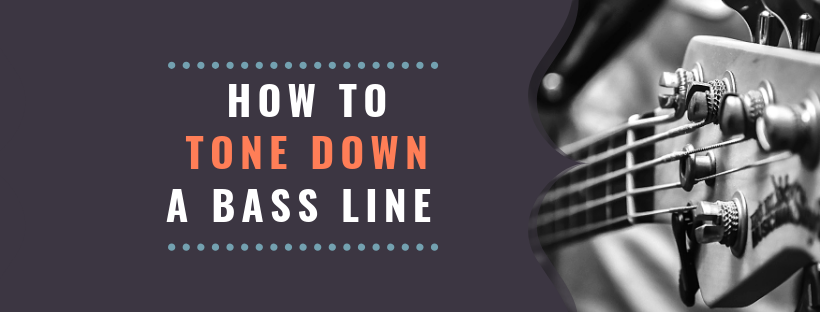How To Tone Down a Bass Line?

As a bassist playing in a band, you need to have a very special skill set.
I’m not talking about playing skills. Surprised?
Often It comes down to having amazing negotiations and even psychology skills to make it. The moment you’re involved in the creative process of composing songs, you need to fit into a very unique mold.
From my experience playing with various bands, fellow band mates (I’m talking guitarist or vocalist here!) can so often have a very different vision of your bass line than you. In this situation, you obviously need to satisfy your own aspirations when it comes to artistic expression of the bass line you’re composing for the song but also pass the consensus with the band.
This brings us to the topic of this post.
I’ll assume that several times you’ve been asked to play LESS in order to do MORE?
But, here’s the catch – guitarist or vocalist asking you to do this have no clue how to explain the idea they envisioned… So, what do you do?
They would ask you to play less and suggest 16th notes groove or show you example songs with very involved bass lines. Maybe they meant being less obvious in the overall mix? What are they aiming for?
Here are some tips how to approach bass lines composing when your aim is to tone down the bass line.
Re-examine the Bass Line
Bass players do have a tendency to play more in the initial drafts when composing the lines.
That’s fine, it’s rare to start small and build up.
I remember a gold tip that I heard way back:
Start with the line you feel good about and then go back and try to cut out all the unnecessary notes and fluff.
This composing approach can have awesome results and the line you end up will usually feel much stronger than the initial version. Take it as a challenge to clean up your line and polish it up.
Rhythm vs Melody
Sometimes bass lines can sound so busy just for the fact that the line is very melodic.
If the song demands less melodic movement from bass, try to stick to root notes and less melodic movement.
You can play a rhythmically involved line with lots of ghost notes, syncopation and groovy 16th notes subdivisions yet still not step onto anyone’s toes.
The same thing goes the other way around, you can experiment with fewer notes played in general but much more movement in the bass for amazing results.
Bass Voicing and Tone
Different bass tone setup can have a huge impact on the overall perception of the song.
Also, do you play the line in the lower register or higher up the neck?
For example, a bass tone rich in mid frequencies will cut through the mix like a knife. It will feel instantly like the bass is playing more.
If you want to sink more down in the mix, you could tune bass-rich sound where you can’t really hear the “fingers” and “individual notes”. This way you can feel the bass but don’t really hear it.
If you use this trick, it’ll often be perceived as playing less.
Drums Lock
Try to pluck notes exclusively on the kick drum hits.
That way you’ll sound like one with the drums and provide a powerful groove at the same time propelling the song forward.
After all, you don’t need to always play more than that.
Tip: practice this technique as its both awesome timing practice as well as a great composing tool to have at disposal.
Conclusion
Bass is a simple instrument and it doesn’t take much to find that sweet spot when creating the supporting line for the song.
Musicians like to go with the “first take” but like all other artists, it takes a lot of additional brush strokes or pages to get rewritten from the initial idea to write a masterpiece.
So don’t be afraid to take notes (no pun intended) from your bandmates and listen to their feedback, and rewrite the lines in the ultimate search for “the one”.
Once you nail that bass lines, you and everyone else will feel it. It just sounds right.
Hope this post inspires you to experiment with both melody, rhythm, and tone when trying to tone down that savage bass line and that you’ll find the tips useful.
